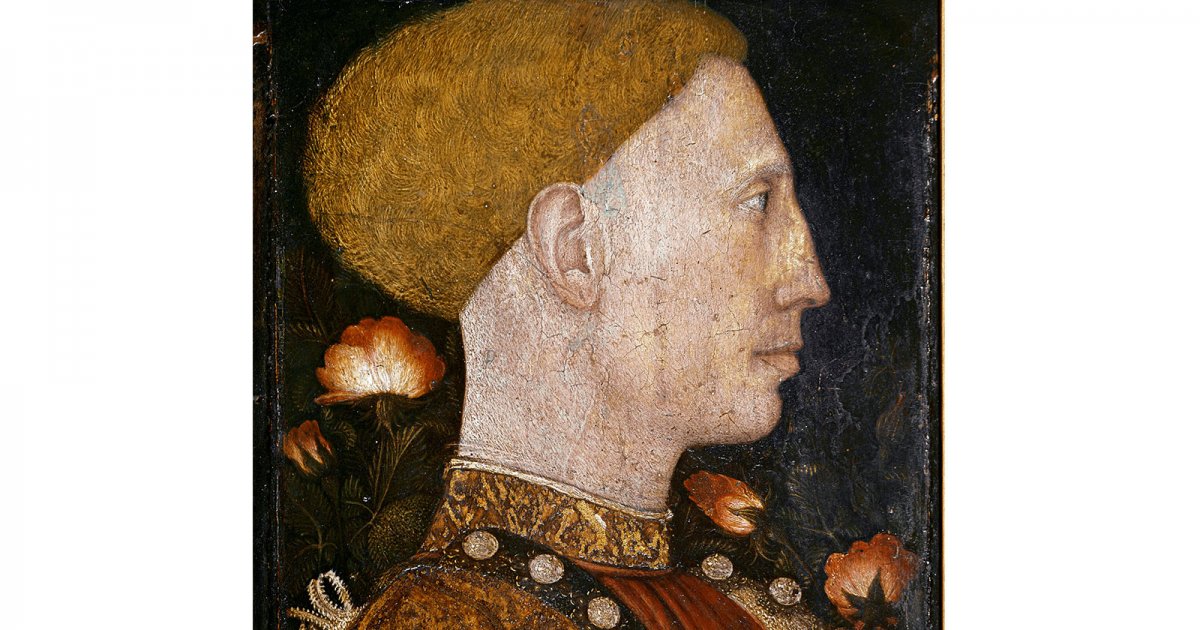ACCADEMIA CARRARA, Hall 2 And Hall 3
 Language: English / USA
Language: English / USA
The first work you’ll see is a splendid, little painting entitled “Ritratto di Lionello d’Este” (Portrait of Lionello d’Este), a portrait made in 1441 of the Marquis of Ferrara by Pisanello, one of the finest painters of the early Renaissance.
The profile of the face, as you can see, resembles the portraits shown on coins, and in fact Pisanello was a highly acclaimed medal maker of the time. It is admirable how he was able to depict the details of the face in such fine detail, as well as the patterns and embroidery of the exquisite fabric. The rose garden in the background alludes to heaven on earth.
Let’s now take a look at the “Madonna col Bambino” (Madonna with Child), painted by the renowned artist Andrea Mantegna around 1475, just after he had completed the famous Camera degli Sposi, or Wedding Chamber, in Mantua.
The work is part of a group of small paintings featuring the Madonna with Child that Mantegna had produced for private customers and not for places of worship.
The two figures in the foreground seem to be in relief, and the atmosphere appears fraught with apprehension: although in a fond embrace, you will notice that the two figures are not looking at each other. The Mother seems to be imagining the future that awaits her Child, and the sorrowful expression of the Child appears to indicate an awareness of his painful destiny; the coral bracelet on his wrist is a symbol of the Passion of Christ.
Take a moment to observe the result of the tempera technique used by Mantegna, featuring a magnificent lapis lazuli blue obtained by grinding the precious mineral from Afghanistan.
You might like to compare this work with another “Madonna col Bambino” from the late 15th century in this room, painted by Carlo Crivelli.
You’ll no doubt be struck by the vivid colors and the presence of vegetables, plants and fruit, as well, of course, as the splendid figures of the Madonna and Child.
The painting is replete with symbols: the apple the Child is holding represents original sin; the blood-red color of the poppy and the cherry represent the Passion of Christ, while the cucumber symbolizes the Resurrection. The red cloth separating Mother and Son from the landscape, with the little roads winding through the trees, represents the division between heaven and earth.
An interesting fact: to prevent the fragile color of Mantegna’s Madonna col Bambino from falling, the linen canvas is constantly kept stretched tight by pegs inserted into the frame.



